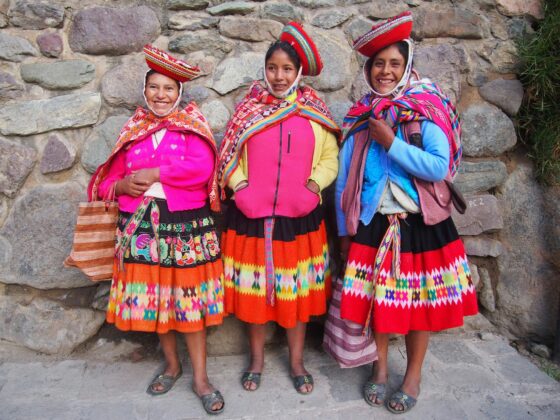The FIFA World Cup 2026 will be the largest ever, spanning three countries, 16 host cities and 48 teams competing in 72 group-stage matches across North America.
Yet despite the scale, hotel demand has been slower than expected. Nine months out, occupancy levels in most host cities are still sitting in the single digits, even for matches involving automatically qualified hosts, the U.S., Mexico, and Canada.
Many hotels are holding back inventory and setting minimum-stay requirements in anticipation of higher-value bookings later.
Fans, meanwhile, are waiting for clarity on where their teams will play before locking in accommodation. Both sides are effectively on pause until two key milestones: the main ticket draw from October 27–31 and the final draw and full match schedule on December 5.
For hotels, those dates will be crucial. Commercial teams will need to track booking pace and demand indicators closely as these will likely mark the start of the real surge in World Cup-related stays.
Key takeaways
- Booking delay factors: Fans await the match schedule, and hotels impose minimum-stay restrictions.
- Anticipated surge dates: Major booking waves expected after the ticket draw (Oct 27-31) and final draw (Dec 5).
- Hotel pricing variability: Room rates vary wildly; New York averages $583 while Houston is $146.
- Co-hosts rate growth leads the U.S.: Mexico (+114%) and Canada (92%) show faster YoY price growth than the U.S. (+55%).
- Inventory restrictions: Length-of-stay (LOS) rules restrict inventory, affecting up to 95% of hotels in cities like Vancouver.
- Current low occupancy: Current on-the-books occupancy remains in single digits for most U.S. cities.
- Revenue strategy imperative: Hotels must use forward-looking data to adjust LOS and apply dynamic pricing.
- Major booking potential ahead: With over 6 million tickets unsold, the primary booking rush is still ahead.
North American hoteliers anticipate a major demand boost
Despite the slow start in bookings, hoteliers across North America are already pricing with optimism. Average rates for the World Cup period sit well above typical 2026 levels – and higher than the same dates in 2025 – reflecting clear anticipation of future demand.
Pricing patterns, however, vary widely by city. A standard hotel room averages around $583 in New York – host of the final at nearby MetLife Stadium – compared with just $146 in Houston, which will stage seven matches. The spread highlights how location, match importance, and local market dynamics are already shaping early pricing strategies.
Similarly, the relative rate of YoY change compared to the same six weeks in 2025 varies just as widely.
In Monterrey, Mexico and Vancouver, Canada average room rates for the tournament period have more than tripled compared to the same weeks in 2025. But in Philadelphia, average rates are up just 28%, underscoring how unevenly anticipation is translating into rate increases.
Nine months out from the tournament, prices for the six-week tournament window have climbed by roughly 50% compared to 2025 – a healthy lift, but not the surge many hoteliers may have expected from the world’s largest sporting event.
At the time of writing, the peak weekly average price posted for the tournament final is $624 in New York during the week of the final, fitting for a city hosting the tournament’s biggest match.
Yet, across most host locations, rates are actually higher during the opening weeks, when more games are scheduled and inbound demand is likely to peak.
Why are Canada and Mexico pulling ahead of the U.S. in hotel room price growth?
For hotels in the U.S. host cities, the World Cup is already translating into aggressive pricing strategies and elevated expectations.
Average rates for the first nine months of the year in U.S. host cities show 14% YoY growth in 2026, far outpacing the growth seen nationwide.
The influence of the tournament is clear; when the competition weeks are excluded, host city rates are still 6% higher than the same period in 2025.
This contrasts sharply with the average nominal increase across the entire U.S., which stands at a modest 3% YoY overall (for the opening nine months), and a 2.5% rise when the tournament weeks are removed.
Yet even with that boost, the U.S. is lagging behind its co-hosts.
During the tournament period, average hotel prices in the U.S. host cities are 55% higher during the tournament than the same period in 2025. In Canada, prices have nearly doubled, while in Mexico, rates are up an extraordinary 114% year-on-year.
The faster rate growth in Canada and Mexico likely reflects more than just pricing confidence. Both countries have smaller hotel inventories in their host cities compared with the major U.S. cities. Football culture, particularly in Mexico, enjoys deeper cultural roots that naturally drive stronger early demand. Policy may also be playing a role.
Overall, international travel spend in the U.S. is forecast to decline in 2025 as travelers respond to ongoing reports of more restrictive visa conditions and tighter border procedures, as well as broader trade tensions with neighboring countries.
In that climate, some degree of caution is understandable. However, in previous editions we saw that hardcore fans still traveled to Russia, South Africa and Qatar, so it is probable that this will not prevent a wave of fans traveling to the U.S.. It may simply mean that bookings could remain slower until tickets and travel plans are locked in.
The event tourism demand surge is still yet to come
The World Cup booking rush hasn’t begun just yet. Market occupancy data shows most fans are still waiting, while many hotels continue to restrict inventory. As a result, the majority of reservations are still to come, with clearer demand signals expected in early 2026.
At this stage, seven U.S. cities have enough data to gauge citywide occupancy: Atlanta, Boston, Dallas, Los Angeles, New York, San Francisco, and Seattle.
In nearly all of them, market on-the-books remains in single digits for much of the tournament, with slightly higher levels appearing earlier on in the schedule.
The current high point occurs on June 18, when San Francisco reaches 17% ahead of match 31 in Group D – the group featuring the U.S.. By contrast, occupancy in New York remains at 3% or less until the final week.
When viewed in context, current booking levels are higher than normal for this time of year, but still far below what a World Cup host market would typically expect.
Across the seven cities that we looked at, average occupancy from January 2026 through the end of the tournament is just 1-2 percentage points higher than usual.
The most noticeable gains appear in the first two weeks of the group stage, where occupancy nearly doubles as fan interest peaks.
Length-of-stay restrictions contributing to the lag in World Cup hotel bookings
One major reason for the slow booking pace lies in the restrictions put in place by hotels.
Many properties are holding back rooms or enforcing strict minimum-stay restrictions, waiting for the most profitable moment to release inventory once ticket allocations are finalized and the full group stage schedule is known.
Data across all host markets shows significant portions of hotels listed as unavailable during the tournament, either due to length-of-stay (LOS) restrictions or withheld inventory.
The extent varies by city, but typically one-third or more of hotels have some form of limitation. In Toronto, that figure ranges from 27–40%, reflecting its smaller venue capacity, while Vancouver sees restrictions on up to 95% of hotels during group match days.
With several critical milestones approaching, the next three months will be pivotal for North America’s hospitality sector. Ticket sales resume on October 27, continuing through November, before the final draw and full match schedule are revealed on December 5 – moments expected to trigger the first major wave of bookings.
Hotels and revenue managers should be monitoring this period closely, tracking forward-looking demand data, competitor pricing and booking curves to anticipate when demand surges into their markets.
FIFA reports more than one million tickets have been sold so far, out of an estimated 7.1 million tickets available. That means the majority of sales, and the bookings that follow, are still to come.
As those sales ramp up, North America’s travel industry should prepare for a sharp shift in booking figures and available inventory in the months ahead.
FIFA World Cup 2026 demands a data-led approach to revenue strategy and pricing
The current phase, marked by strategic LOS restrictions and a delayed booking curve, offers a brief but valuable window to prepare.
By using forward-looking demand data, you can gain a crucial edge over competitors relying solely on on-the-books figures.
For revenue teams, this means identifying the precise moment the demand dam bursts and a flood of bookings follow – likely around the time of the draw – and acting before it does.
With an extended window of opportunity, you can proactively adjust your minimum-stay requirements, execute a high-yield dynamic pricing strategy and craft targeted marketing campaigns to key geographical source markets before competitors inject unrestricted inventory into the market.
Destination Marketing Organizations can take a similar approach, using early demand signals to target high-value international source markets and mitigate any potential impact of policy concerns with timely, welcoming messaging.
Explore how Lighthouse’s suite of market intelligence tools can guide your strategy over critical periods of high demand such as the FIFA World Cup 2026.
About Lighthouse
Lighthouse is the leading commercial platform for the travel & hospitality industry.
We transform complexity into confidence by providing actionable market insights, business intelligence, and pricing tools that maximize revenue growth.
We continually innovate to deliver the best platform for hospitality professionals to price more effectively, measure performance more efficiently, and understand the market in new ways.
Trusted by over 70,000 hotels in 185 countries, Lighthouse is the only solution that provides real-time hotel and short-term rental data in a single platform. We strive to deliver the best possible experience with unmatched customer service. We consider our clients as true partners—their success is our success.
For more information about Lighthouse, please visit: https://www.mylighthouse.com.
Jonathan Gough
PR & Content Manager
Lighthouse






















